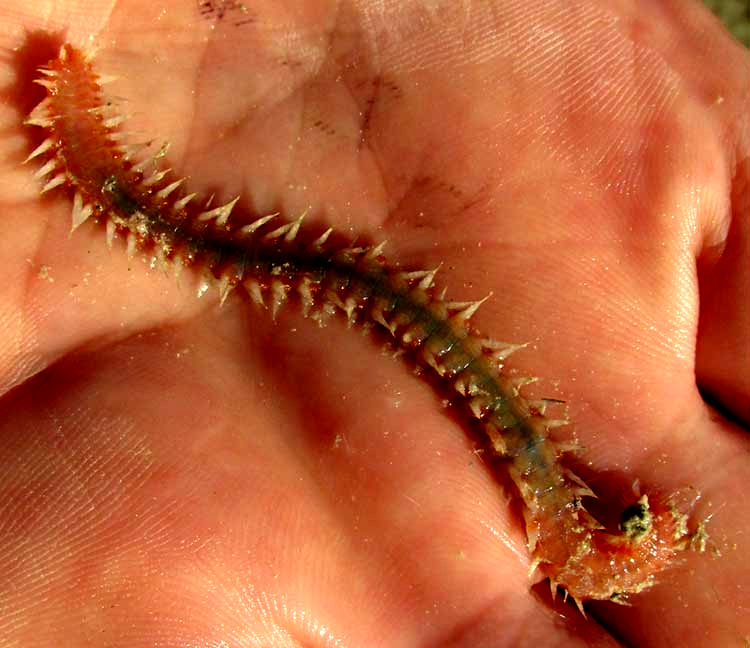
(the annelids)
Segmented worms, the same as mollusks and vertebrates, constitute their own phylum, the Annelid phylum, the Annelida. Therefore, when the whole world of animals is considered, segmented worms stand out as a major and important group. During the evolution of Life on Earth, when the first annelids arose, they brought with them a very important innovation over their ancestors: they were segmented.
Some but not all scientists think that probably both arthropods such as insects and lobsters, and us chordates (animals with backbones) arose from annelids. Arthropods clearly are segmented, as are we chordates, with our arms, legs, torso and head. It's just that our body segments, over time, have shifted so that today don't come one after another.

In most backyards you won't find any annelids unless you dig up an earthworm, or your dog comes in from wandering in a swamp, with a bloodsucking leech attached. However, the world's oceans are well populated with annelids, and often they turn up in fresh water environments, too. You may enjoy reviewing several "polychaetes," or marine bristle worms, which are annelids, on Naturalist Jim's Worm page.
HOW ANNELIDS ARE MORE COMPLEX THAN MOLLUSKS
- Annelids are segmented, with each segment bearing the same fundamental structures as all the others, though minor differences can occur between some segments. By distributing organs among many segments, it becomes less dangerous to an annelid if one organ is damaged.
- Young annelids usually add new segments as they grow older by simply making new copies of the body's last segment -- a sort of efficient assembly-line construction
- In annelids, blood circulates in a closed system of blood vessels -- it does not at some point simply drain into open sinuses, as with the mollusks. This assures that the annelid's blood doesn't pool someplace in its body and for a time become useless, and that only oxygen-depleted blood is circulated back to have its oxygen replenished
- Annelids are covered with a very thin, cellophane-like cuticle, which cuts down on moisture loss from the body. Annelids don't dry out as fast as mollusks
Despite these "improvements" over earlier forms of life, annelids are by no means very sophisticated. They don't have anything as fancy as a skeleton, or an ability to keep their bodies warm when the temperature drops. Also, the problem with their bodies drying out remains critical, despite the cuticle. They don't have very big brains, either.
Here's something very interesting about segmented worms: If an explorer-naturalist from another galaxy came to Earth with the assignment of collecting an "average Earth-animal," after studying everything from the lowliest sponges, jellyfish, and flatworms, to us humans, there would be a fair chance that he/she/it would choose to take back an annelid. In other words, segmented worms occupy a position about midway between the simplest and most complex of Earth's animals.